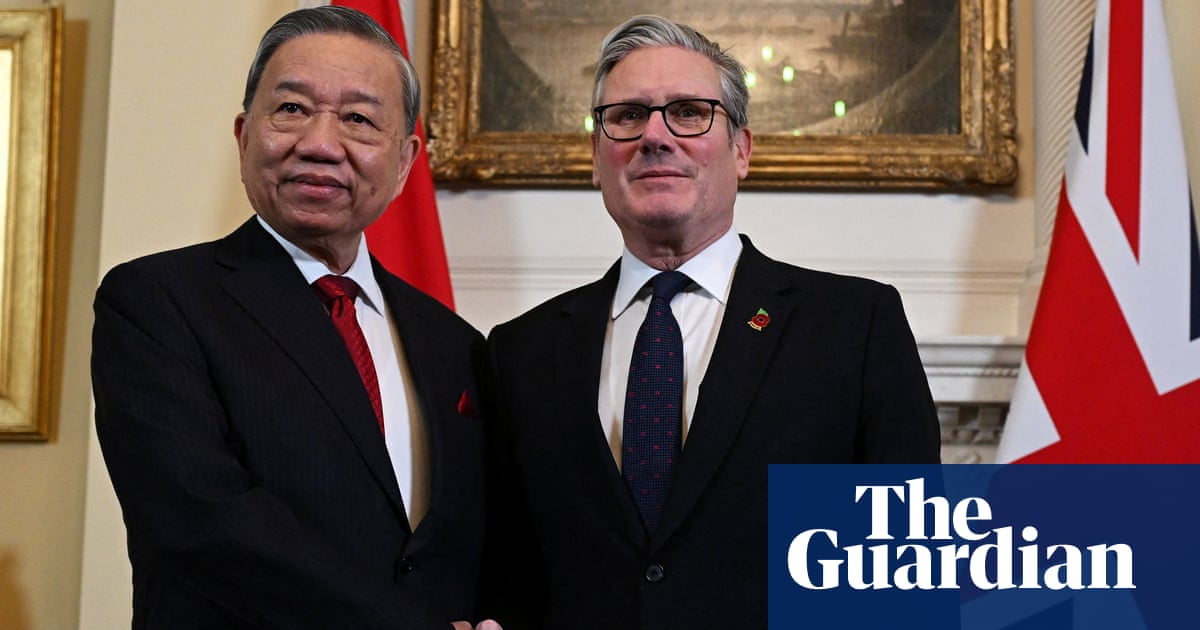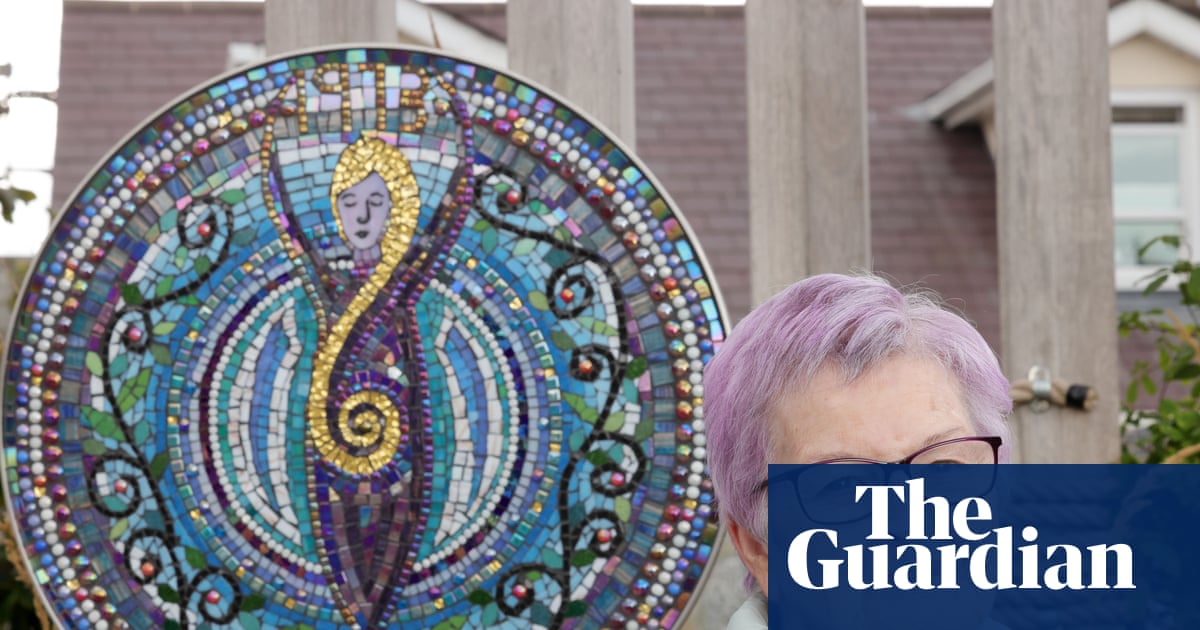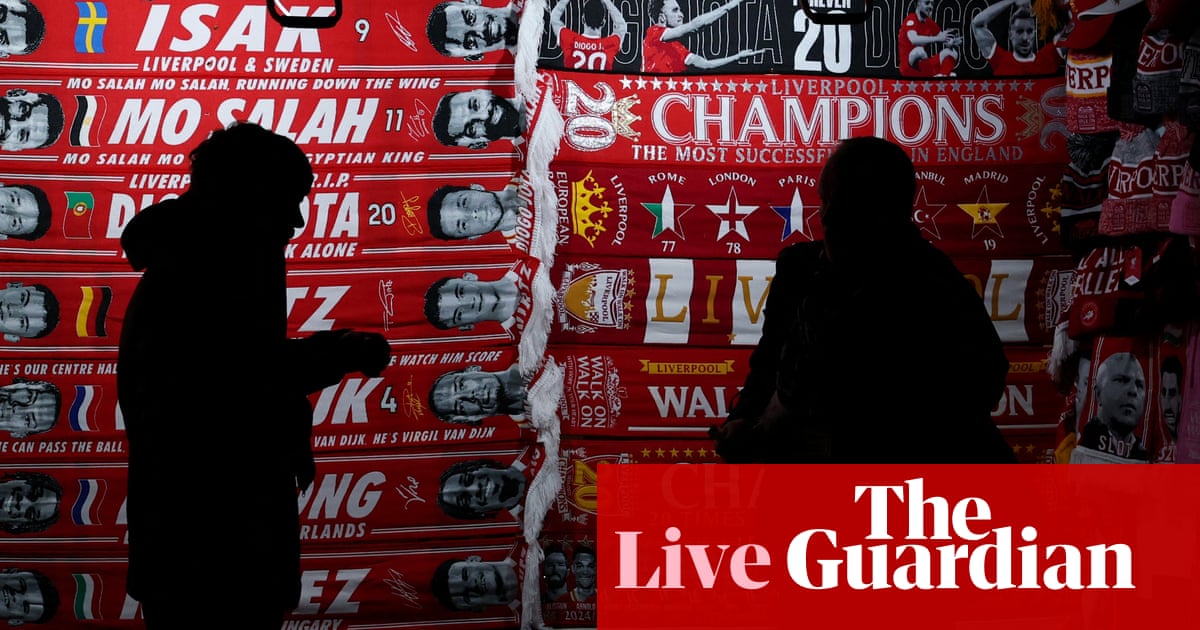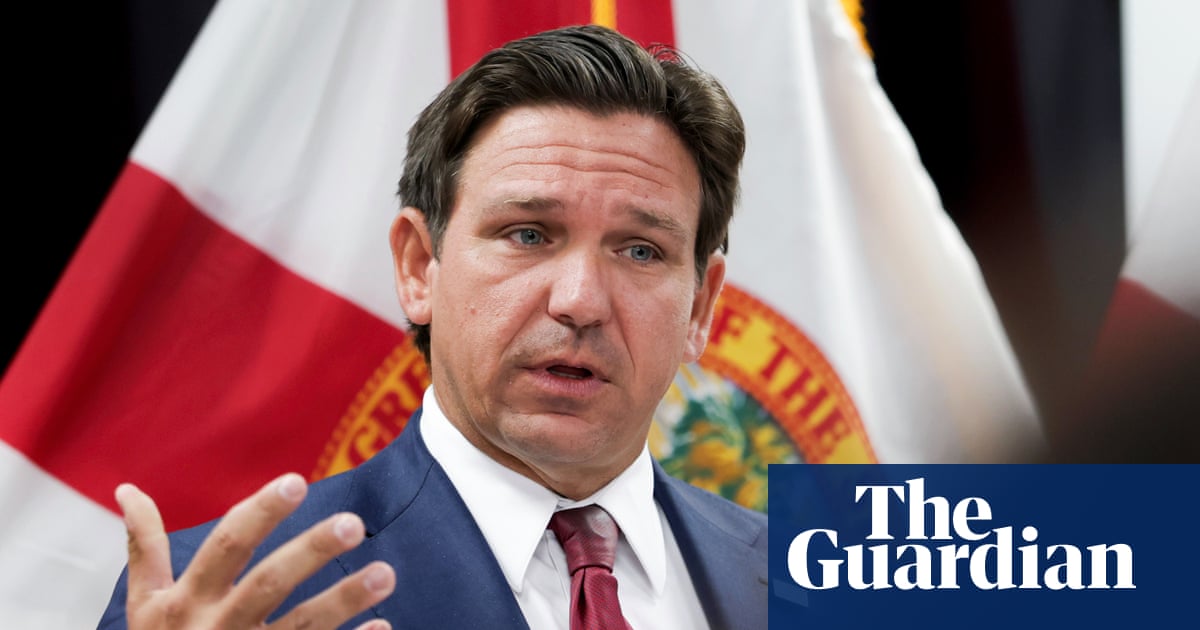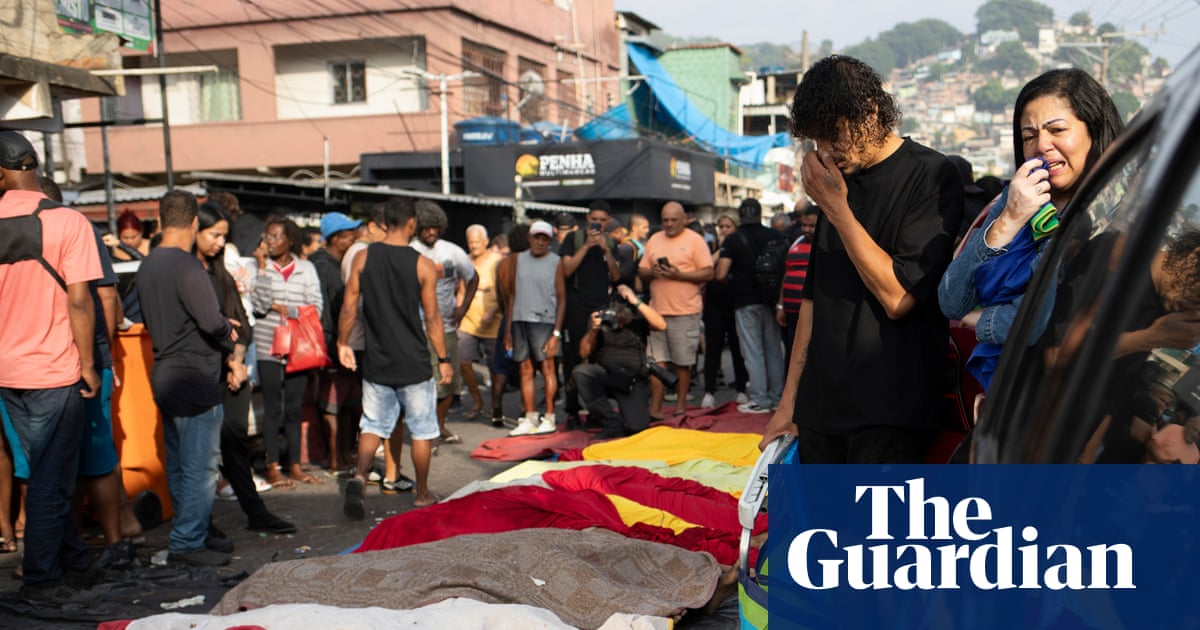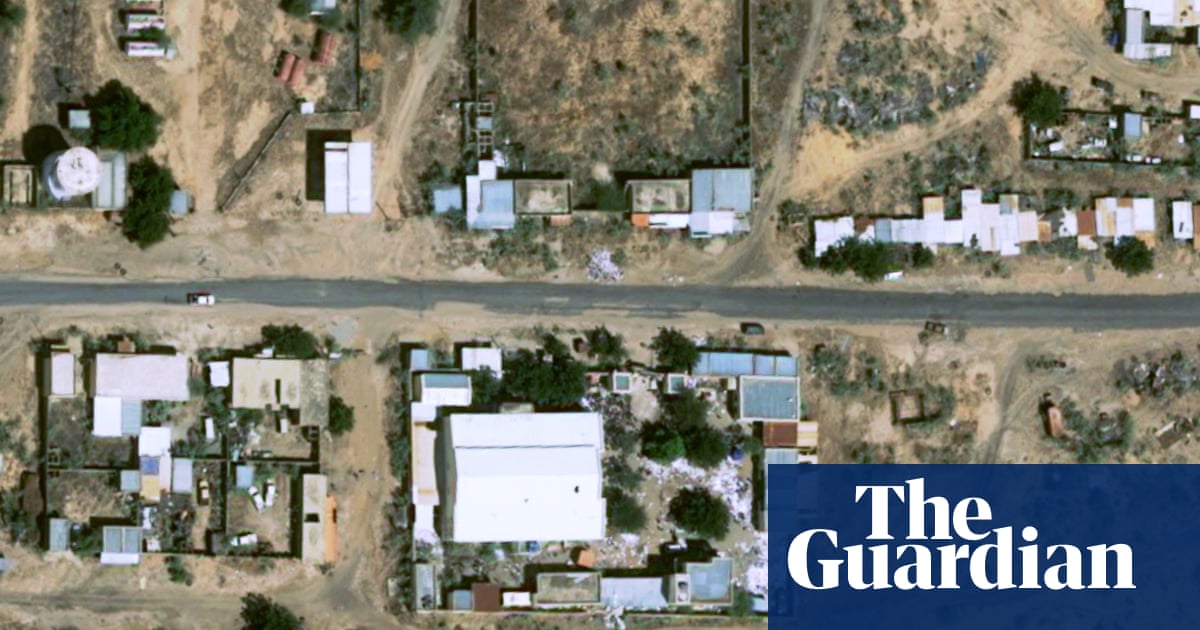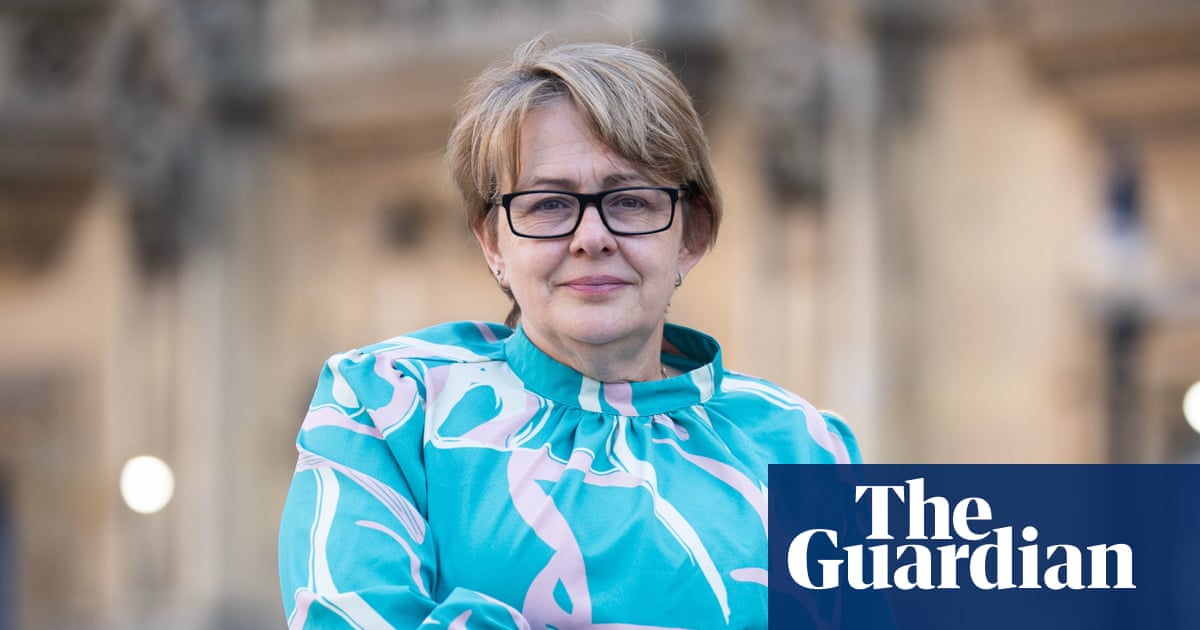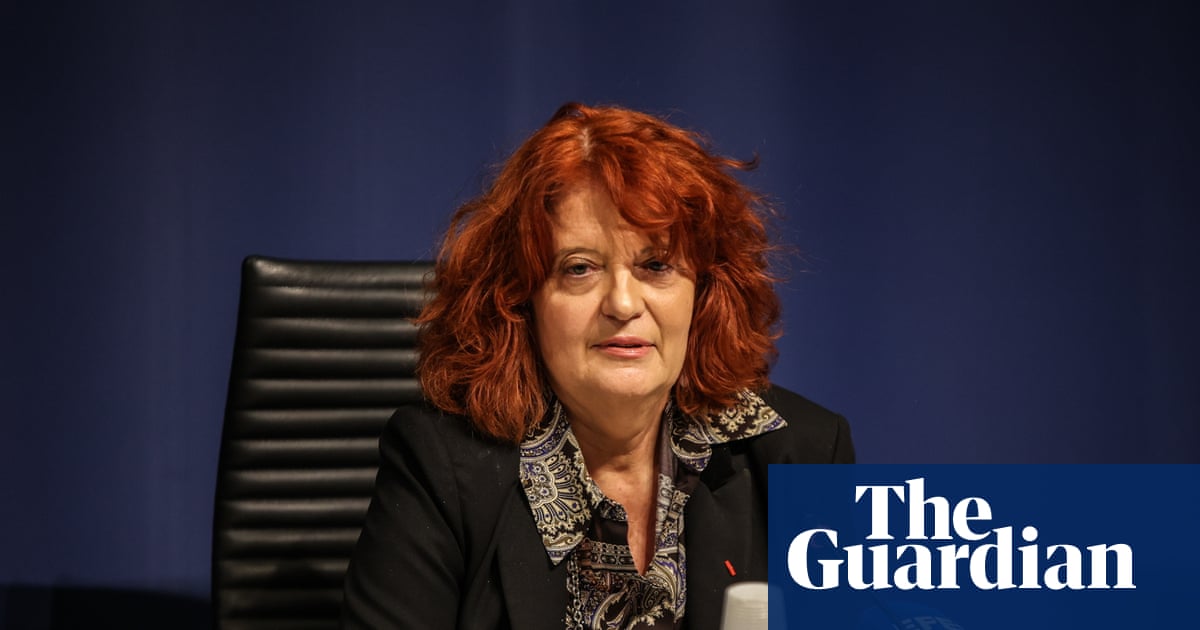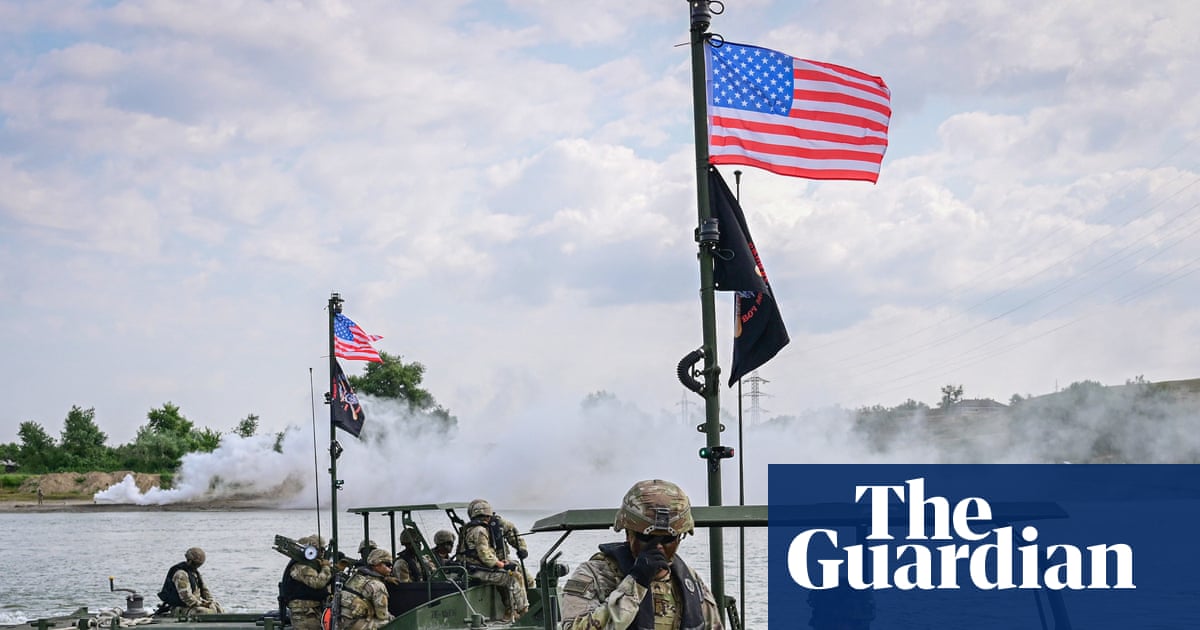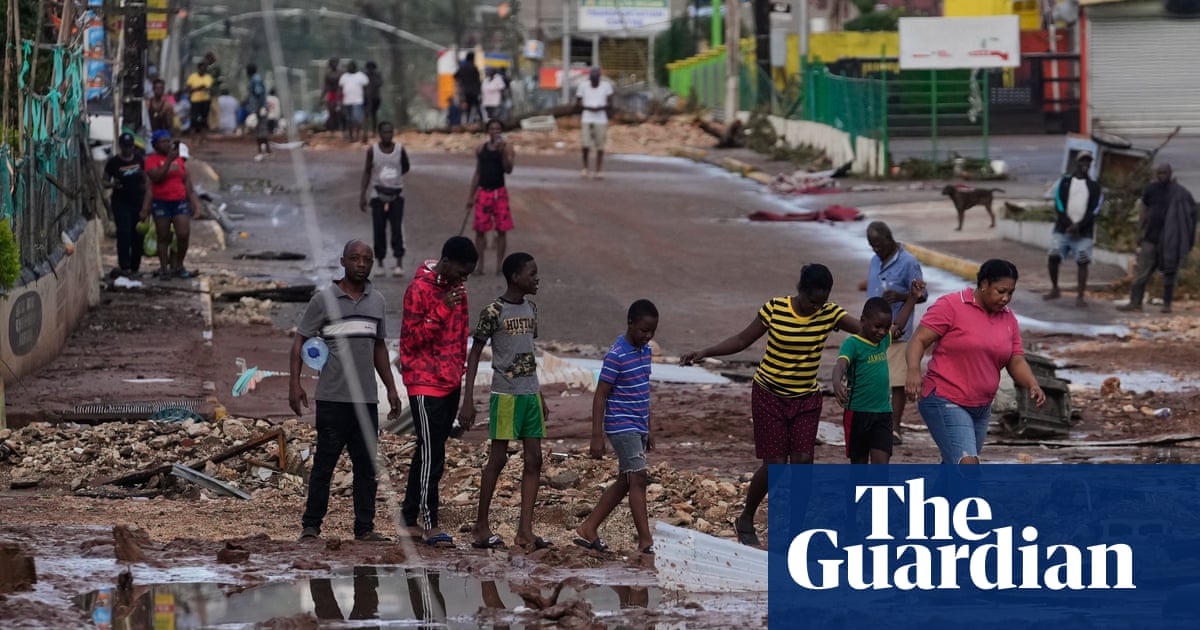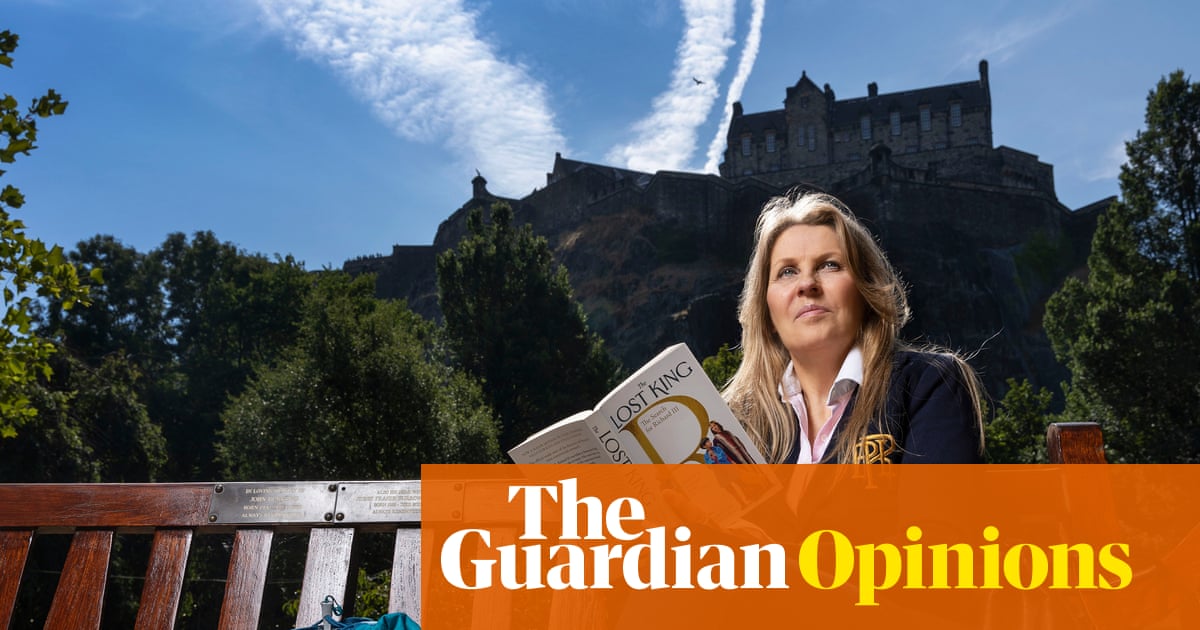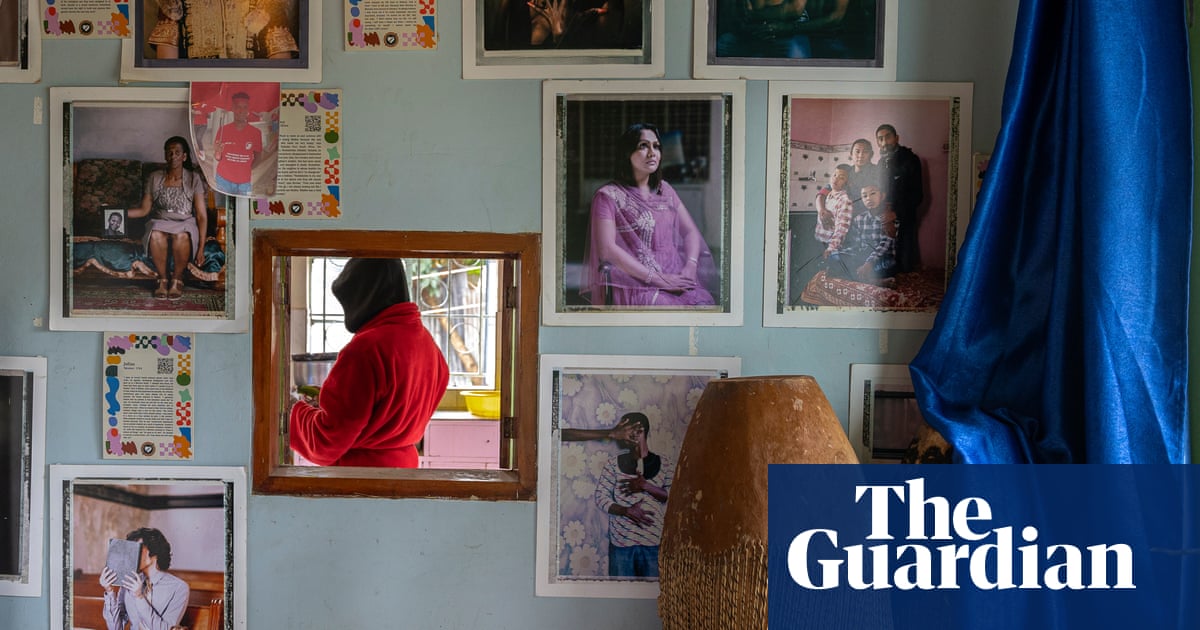One Sunday in June, it’s 20 minutes before opening time at the No Greater Love food pantry in Belfast, Maine, two hours north of Portland. A line of cars stretches down the block and curls around the corner. I lean into a car window and ask the driver if he will speak with me.
“Nah,” he says, “I’d rather not.”
“How about you?” I ask his passenger.
The younger, skinny man recoils, shrinking into the far corner of the car. “I’m good,” he mutters, hiding his face.
Maine is the most food insecure state in New England. One in seven people here are often hungry, including 50,000 children.
Nationwide, 53 million people – 15% of all Americans – are food insecure, meaning they lack reliable access to a sufficient quantity of affordable, nutritious food.
But asking for help still makes people burn with shame.
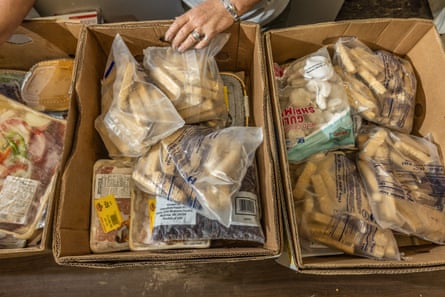
Mary Guindon gets it. Today, Guindon is 63, a grandmother, church secretary and the diplomatic assistant director of the food pantry, a woman who is somehow always busy and never flustered. Decades ago, she was a single mother working full time. Some nights, she didn’t have enough food to make dinner for her kids. Finally, friends persuaded her to visit a pantry. “Standing in that line and swallowing my pride was probably one of the worst moments of my life,” she says.
Behind the two men who will not talk, I find a patron who will: another woman named Mary. This Mary, 75, leans crookedly on a walker. She smiles, a small woman with bright eyes and short, white hair. I’m reminded of a chickadee. “I’m house cleaning,” she says, referring to her car, filled to the brim with stuff she is reorganizing.
A former housekeeper, Mary lives alone in a trailer. Food prices soared 25% from 2020 to 2024. “Chocolate chips and baking things doubled,” she says, her eyes wide. “Bread, meat – all the basics.”
You can stretch social security only so far. Mary now buys only essentials. That means losing her favorite activity. “I just love to cook and give it away,” she says.
She parked here, outside the rundown Veterans of Foreign Wars (VFW) hall that houses the pantry, before 8.00am – more than two and a half hours early. This is how she spends every other Sunday morning, when No Greater Love is open for a scant 90 minutes. Months ago, Mary learned the importance of getting a good place in line to get fresh vegetables and fruits before they run out.
Behind her, Donna, 71, also waits. She grew up on a farm in Maine. She leans toward me and gives a conspiratorial smile. “I used to give chewing gum to the pig,” she says. “But one day the pig was gone. I knew where it went.” She, too, lives alone on a fixed income. “I give people rides to make a little extra money,” she says – her own personal Uber service. She won’t charge the two neighbors she has brought with her today, though.
Like Mary, Donna is also hoping for good fresh produce.
Today, they will be disappointed.
No Greater Love’s volunteers began noticing it in January: a slow but steady increase in need. The line of cars, barely visible through a dirty window in the pantry’s small kitchen, stretches a little longer every time: a new family here, another elderly patron there, finally accepting that as costs climb, they can no longer keep hunger at bay by themselves.
Food pantries, non-profits, and school feeding programs distributed almost 6bn meals’ worth of free food in every state in the nation last year.
When Congress’s historic cuts to Snap (Supplemental Nutrition Assistance Program) and Medicaid take effect, that need will almost triple. Somehow, food pantries like the scrappy, all-volunteer-run No Greater Love, will need to come up with enough food.
That line outside the VFW hall? It will snake down three blocks and take up who knows how many hours of waiting time.
If, after 12 years of serving people like Mary and Donna, No Greater Love is able to keep its doors open at all.
Tanya McGray moves cases of canned food, her hands flying in practiced motions. Nearby, Mary Guindon packs cardboard boxes two rows high on a metal dolly, piling them with corn, beans, peanut butter and elbow noodles.
They try to fill each box with several meals’ worth of food. They are overstocking them with canned goods today, making up for a surprise shortage of fresh produce.
“Make another row,” McGray barks.
“You sure?” Guindon says. “Last I counted, we had 18.”
She’s referring to the 18 families in line outside. Before long, there will be more.
As quiet and languid as it is outside, the pine-paneled hall hums with energy inside. There is a lot to do before 10.30am – before McGray, the pantry’s director, can allow the first patrons in.
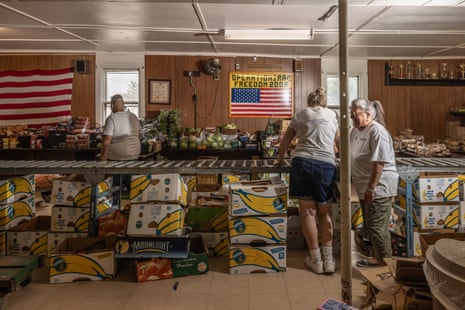
Guindon grabs three more banana boxes. The white, yellow and blue Chiquita boxes are ubiquitous in the emergency food system, the standard luggage of the servers and the served, the charitable and the hungry.
Often, these two groups are the same.
I offer to help, feeling useless holding my digital recorder rather than flexing a muscle for these women.
McGray is 52, 11 years younger than Guindon. Working alongside them is McGray’s mother, Candy, her gray hair tied in a ponytail. She is 74, a not uncommon age for volunteers in Maine’s food pantries. In fact, it’s not an uncommon age for the volunteers who keep the entire nation’s fragile emergency food network afloat. At least in Maine, some 75% of the state’s 250 pantries are run solely by volunteers.
Her long, brown hair swinging as she works, McGray waves me off. Her loud, cigarette-tainted voice is as rough as sandpaper.
“We’re a well-oiled machine,” she says. “But thanks.”
There is an air of tense anticipation in this small room, lined with metal shelves crammed with canned corn, low-fat milk and soup. Like a crew setting the stage before the curtain rises, they must be completely ready when the doors open.
They have less than 30 minutes.
Behind them is a handful of refrigerators and freezers. One refrigerator has been broken for months. Some freezers are full of food; this week, it is leg of lamb that Guindon paid Good Shepherd, Maine’s only food bank, $1.82 a case for.
“It’s what we can afford,” Guindon says. The meat is coming up on its expiration date in a month. What she doesn’t say is how hard something like leg of lamb can be for many patrons to cook. Some don’t know how. Some only have microwaves. Others have no kitchens.
McGray wears a fist-sized tattoo on her left shoulder. Her large, brown eyes, ringed with gray shadows, are framed with schoolgirl bangs.
She is the third generation of her family to serve in food pantries. Forty-five years ago, her grandfather distributed government food in a Belfast parking lot. Her aunt, Cindy Ludden, has run the Jackson, Maine, food pantry for 34 years. Ludden is mentoring the fourth generation: her eight-year-old granddaughter, Scout, wants to direct a food pantry when she grows up.
McGray began helping out at No Greater Love when her church founded it years ago. “It was just something I did,” she shrugs.
But when the church decided it needed to reclaim the space for other programs, McGray says, “Then it became something I fought for.”
“I’m always fighting for the underdog,” she says. “I do it everywhere I go. Not intentionally, it just happens.”

By day, McGray drives a public school minivan for unhoused kids. By night, she is a foster mom. In April, she had an infant at home.
Guindon, shorter and with a soft, round face, gray hair and glasses, fundraises and orders food. At the end of their shift, the two women, along with other volunteers, will deliver food to those who can’t come in: people with physical disabilities. Those without cars. Veterans with PTSD who can’t be around people.
Without McGray, Guindon and a tall, rangy 57-year-old volunteer named Kenna Dufresne, No Greater Love wouldn’t function.
Outside this storage room, Dufresne sprints from one end of the long VFW hall to another, hefting heavy boxes into a staging area. From there, she will help move them to the 25ft-long conveyor belt that runs down the center of the hall.
“Do you work out?” I yell. She flashes a wide grin. “This is my gym,” she yells back.
If it is her gym, she is diligent about training several times a week. To keep the pantry stocked, volunteers collect unsold food from Hannaford grocery stores up to an hour away. (Last year, Hannaford donated 14m lb of food in Maine alone.)
Every two weeks, Dufresne drives from store to store, slinging thousands of pounds of food a year into the pantry’s van. She has been on pickup duty for nine years, ever since McGray plucked her from the pantry’s patrons and put her to work.
She loves it.
“It’s a family,” she says. “Even our patrons.”
As rewarding as it is, the work is also physically strenuous, emotionally exhausting and logistically complex. Every political, economic and cultural problem in America shows up at a food pantry. Funding is tight. The cost of living is rising. Hunger is growing. Stigma remains enormous. Volunteers are essential, but in rural areas like this one, it can feel impossible to recruit younger helpers.
Years ago, No Greater Love was open every week. “We had to cut back to twice a month because I couldn’t get volunteers,” McGray says.
And that was before March, when an email arrived and everything got even harder.
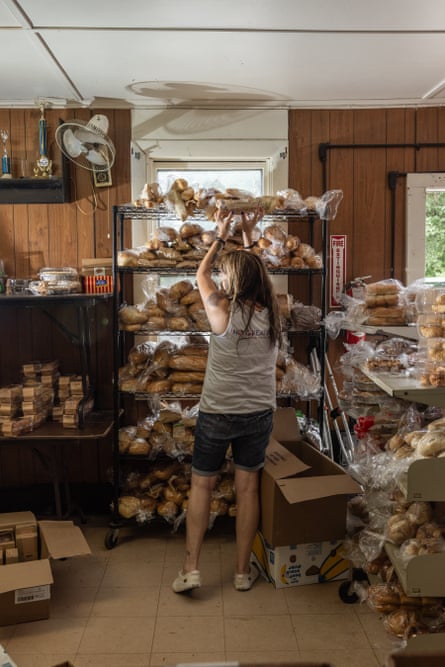
On 13 March, Guindon opened her computer to an email from Good Shepherd. The food bank distributes government and donated food to Maine’s 600 anti-hunger organizations, including its 250 pantries.
What Guindon read alarmed her.
The Trump administration planned to cut more than $1bn from the federal emergency food assistance program.
Almost overnight, No Greater Love would lose half to two-thirds of the food they receive, for free, from the federal government.
The USDA would also end another program that helps sustain small farmers while providing local produce to food pantries. In Maine, pantries would lose up to 600,000lb of produce.
No Greater Love had $5,000 in the bank.
When I first visited in April, a few weeks after Good Shepherd’s bombshell email, No Greater Love’s menu had already shrunk.
“We used to be able to provide seven or eight meals a week,” Tanya McGray says. Now, they were down to three or four. In April, they had received 1,100lb less food than they had in March.
On 22 June, they are down another 700lbs. There has not been any free meat in weeks.
Luckily, the pantry still has extra donated food to offer. Guindon and I survey today’s choices. Her teenage grandsons, Bentley and Liam, hover nearby.
In April, these boxes were bursting with carrots, lettuce, apples, bread, almonds and crackers.

Today, eight bruised apples barely cover the bottom of a box. In another, I cringe at an oozing nectarine.
The day before, high winds had knocked out power to the local Hannaford. They lost much of their produce. This is the result.
But then some gorgeous kale catches my eye. I spot magenta rhubarb longer than my arm. Local farms provided them. They will be a happy surprise for those at the front of the line.
Bentley taps Guindon on the shoulder and points to his watch. “Two minutes,” he says, glancing at the door. The boys preside over bags of bread and desserts. Before food began dwindling, patrons could take what they wanted from the heaping boxes I had seen in April. Now, Bentley and Liam hand it out to avoid hoarding.
The doors finally open. The volunteers’ quiet hum swells into a hubbub of conversation as patrons enter. I catch Mary’s eye as she drops a $5 bill into a donation jar on the kitchen counter.
That $5 is meaningful. No Greater Love’s bank account has shrunk to $3,500, all of it allocated to rent, electricity, gas, vehicle maintenance and maybe some extra food, like the inexpensive leg of lamb. Guindon has already started on the next grant applications. The future of this food pantry and thousands like it now rests on their ability to raise private funds.
For now, McGray and Guindon will put one foot in front of the other. They will send another box down the conveyor belt. They will welcome another new patron in the door.
They will spend one more day fulfilling three generations’ worth of persistence in the face of hunger.
The doors are still open.
So far.


 3 months ago
42
3 months ago
42

